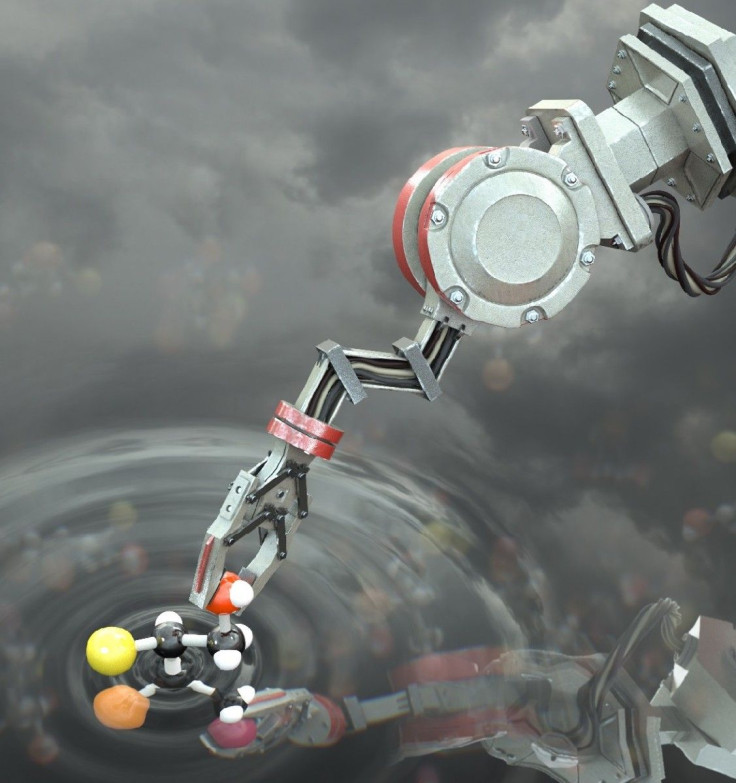Robots That Can Create, Arrange Molecules Could Be Future Of Manufacturing

In a breakthrough in the field of artificial intelligence-supported nanotechnology, scientists at the University of Manchester have created the world’s first “molecular robot,” which can carry out a set of building commands at the molecular level.
The robot, capable of manipulating as little as one molecule of a particle, is made of 150 atoms mostly of carbon, hydrogen, oxygen and nitrogen, and is so small that several millions of them could easily fit atop a pin head.
The robots operate by carrying out chemical reactions in special solutions which can then be controlled and programmed to perform the basic tasks.
These robot arms work just like Lego bricks, according to professor David Leigh, who led the research at the university's School of Chemistry.
"All matter is made up of atoms and these are the basic building blocks that form molecules. Our robot is literally a molecular robot constructed of atoms just like you can build a very simple robot out of Lego bricks. The robot then responds to a series of simple commands that are programmed with chemical inputs by a scientist," he said in a release.
In the future such robots could be used for medical purposes, advanced manufacturing processes and even building molecular factories and assembly lines, the scientists say.
The research published in the Manchester University website provides fuel to the imagination.
A billion-armed army making molecule after molecule of a substance you want and arranging them to create something could become the future of 3-D printing.
An unfettered human imagination can create thousands of functions for this potential game-changer. The possibilities of this invention are endless, and it depends on how it is harnessed.
As of now, the team aims to create the smallest construction tools possible. By bringing down manufacturing down to a molecular level, the team is looking to make the process more cost, power and labor efficient.
"Molecular robotics represents the ultimate in the miniaturization of machinery. Our aim is to design and make the smallest machines possible. This is just the start but we anticipate that within 10 to 20 years molecular robots will begin to be used to build molecules and materials on assembly lines in molecular factories," professor Leigh said.
The initial design and manufacturing of the robots will be complex, but the science behind them is simple controlled chemical reactions, the team added.
Once the design is perfected, the rest will fall in place, according to professor Leigh. “It is similar to the way robots are used on a car assembly line. Those robots pick up a panel and position it so that it can be riveted in the correct way to build the bodywork of a car. So, just like the robot in the factory, our molecular version can be programmed to position and rivet components in different ways to build different products, just on a much smaller scale at a molecular level,” he said.
© Copyright IBTimes 2024. All rights reserved.











